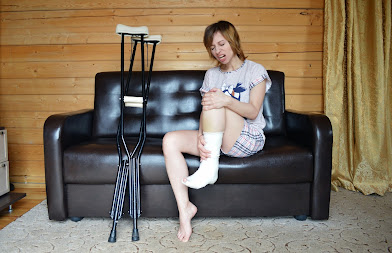Do you often suffer from leg pain? Do you sometimes feel faint or dizzy? If so, it could be a sign of low blood pressure. Low blood pressure, also known as hypotension, is a common medical condition that can lead to a variety of uncomfortable symptoms, including leg pain. In this blog post, we will explore the connection between leg pain and low blood pressure and discuss ways to help manage this condition.
What is Low Blood Pressure?
Low blood pressure, also known as hypotension, is a medical condition where the amount of blood flowing through your arteries is lower than normal. This can lead to symptoms such as dizziness, lightheadedness, fainting, and leg pain due to low blood pressure. In some cases, these symptoms can be caused by other medical conditions such as dehydration, anemia, and diabetes. However, if your doctor suspects that low blood pressure is the cause of your leg pain, they will run tests to confirm this diagnosis.
When it comes to leg pain due to low blood pressure, it is important to note that it can be very uncomfortable and even painful. The most common symptom of low blood pressure in the legs is aching or cramping in the calf muscles. This pain may be worse when you stand or walk for long periods of time. Other symptoms include numbness or weakness in the legs, swelling in the ankles or feet, and coldness in the legs or feet.
If your doctor suspects that your leg pain is due to low blood pressure, they will likely order tests to measure your blood pressure. If your doctor confirms that you have low blood pressure, they will likely recommend lifestyle changes and/or medications to help manage your symptoms. Common lifestyle modifications include increasing water intake, reducing salt intake, and exercising regularly. Your doctor may also prescribe medication to help regulate your blood pressure.
By understanding what causes low blood pressure and the associated symptoms such as leg pain, you can work with your doctor to develop a treatment plan that works for you. Remember, it is important to see your doctor if you experience any type of leg pain due to low blood pressure.
How Does Low Blood Pressure Cause Leg Pain?
Low blood pressure is when your body doesn’t have enough blood circulating throughout your system, resulting in a drop in oxygen and other essential nutrients to the organs and muscles. When this happens, it can cause leg pain due to low blood pressure, as the muscles in your legs don't receive the proper nutrition needed to stay strong and healthy.
Leg pain due to low blood pressure is typically a dull ache that may worsen with movement or activity. It’s important to note that this type of leg pain is not like regular muscle fatigue that comes from exercise, but rather from a lack of proper circulation and nourishment to your muscles. If left unchecked, this type of leg pain could progress to cramping or even spasms.
Fortunately, there are several ways to address leg pain due to low blood pressure. Eating a balanced diet rich in fruits and vegetables can help improve circulation and strengthen your cardiovascular system, while staying hydrated and avoiding unhealthy habits such as smoking can also help. Regular exercise is another important factor in managing low blood pressure, as it helps your body more efficiently pump and circulate oxygen-rich blood throughout your system. Additionally, if you're experiencing leg pain due to low blood pressure, it's important to consult with your healthcare provider, as they may recommend medications or lifestyle changes to help reduce your symptoms.
Who Is At Risk for Low Blood Pressure?
Low blood pressure, or hypotension, is a common medical condition that can cause leg pain. It occurs when the pressure of your blood against the walls of your arteries drops too low. The most common causes of low blood pressure are dehydration, certain medications, and certain medical conditions.
When your blood pressure drops, it reduces the amount of oxygen-rich blood being delivered to your legs, resulting in pain and discomfort. People who are at risk for low blood pressure are those who are elderly, have diabetes, are pregnant, or have certain medical conditions such as heart disease or kidney disease. Additionally, people who take certain medications such as diuretics, heart medications, and those used to treat high blood pressure may be more likely to experience low blood pressure.
If you are experiencing leg pain due to low blood pressure, it’s important to seek medical attention right away. Your doctor will perform a physical examination and may order lab tests to determine the cause of your symptoms. Once the cause is determined, they will be able to recommend treatment options to help relieve your leg pain and raise your blood pressure back to normal.
How Is Low Blood Pressure Diagnosed?
Low blood pressure is usually diagnosed during a physical examination. Your doctor may take your blood pressure with a cuff and ask questions about any symptoms you may be experiencing, such as leg pain due to low blood pressure. In some cases, your doctor may also recommend blood tests or additional tests to help determine the underlying cause of your low blood pressure.
If you are experiencing leg pain that you believe is related to low blood pressure, it is important to discuss this with your doctor. Leg pain due to low blood pressure can be caused by a variety of different factors, such as dehydration, certain medications, anemia, and circulatory problems. If you are feeling pain in your legs, make sure to tell your doctor so they can investigate further and determine the best course of action.
Cover Topics:
